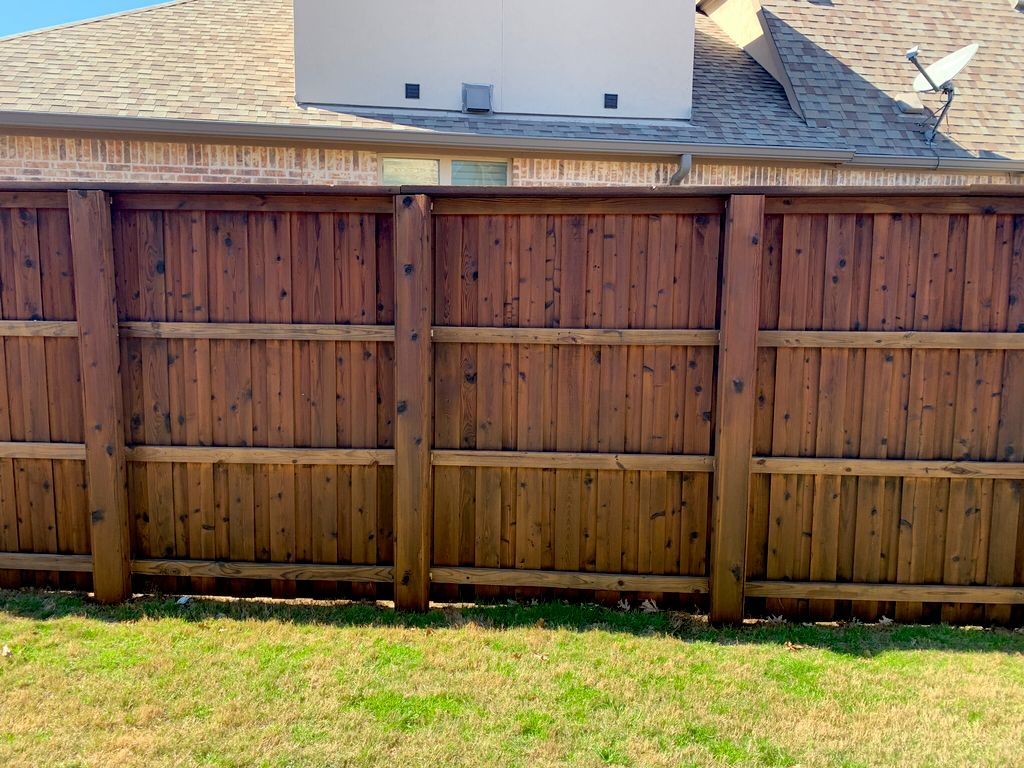Boost Your Fence with Premier Fence Staining Franklin
Just How to Attain Specialist Outcomes With Deck Discoloration
The process of changing an aging deck into a rejuvenated outside room demands more than simply a coat of tarnish; it requires a methodical approach and focus to information. From selecting the appropriate tarnish for your deck's timber type to grasping the application method, each step plays a crucial function in the last outcome.
Selecting the Right Discoloration
Choosing the ideal stain for your deck is a vital decision that dramatically influences the general appearance and long life of the surface. When choosing a tarnish for your deck, it is necessary to consider both the visual choices and the practical facets of the product. The very first factor to consider is whether you favor a transparent, semi-transparent, or strong shade stain. Clear spots allow the all-natural elegance of the wood to reveal with yet use less UV defense. Semi-transparent spots provide a concession between color and timber grain visibility while offering modest UV defense. Solid color spots, on the various other hand, give one of the most UV security and provide a vast array of color options however will entirely conceal the timber grain.

Additionally, take into consideration the sort of timber your deck is made of, as various stains are developed to function best with particular timber types. Comprehending the degree of maintenance you agree to commit to is additionally essential, as some discolorations may need more constant reapplication than others. By very carefully taking into consideration these elements, you can pick a stain that not only improves the look of your deck but likewise secures it for years to come.
Preparing the Deck Surface Area
When considering deck staining, the first step in the direction of achieving expert outcomes includes extensively preparing the deck surface. Correctly preparing the deck surface area is critical as it makes certain that the tarnish sticks well and supplies lasting protection to the wood.
After cleansing, evaluate the deck for any type of damaged or rotten boards. Replace these boards to make sure the structural integrity of the deck. Fining sand the deck surface area is likewise necessary to smooth out any kind of rough areas and open the wood pores for better tarnish infiltration. Use a medium-grit sandpaper to sand the deck in the direction of the timber grain.
Finally, safeguard any kind of close-by plants, furniture, or surfaces from possible damage by covering them with plastic sheeting or ground cloth. Putting in the time to completely prepare the deck surface establishes the foundation for an effective discoloration job and ensures professional-looking outcomes.
Applying the Discoloration
To achieve a professional coating when tarnishing a deck, thorough application of the tarnish is wood fence builder crucial. Use the tarnish equally, adhering to the wood's grain to enhance the deck's all-natural elegance. By using the discolor carefully, you'll achieve a professional-looking finish that enhances both the look and longevity of your deck.
Making Sure Correct Drying Out Time
Making sure ample drying time post-staining is critical to the overall success of the deck project, as it enables the tarnish to properly set and bond with the timber surface. Rushing this stage can result in Continued a series of issues, including unequal coloring, poor bond, and a shorter life expectancy for the surface. The drying out time needed can vary based on elements such as the type of discolor utilized, climate condition, and the porosity of the wood. As a general guideline, a lot of deck stains will certainly need at the very least 24-48 hours to completely dry fully.
Throughout this drying out period, it is essential to maintain the deck surface complimentary from any kind of foot traffic, furnishings, or various other things that may disrupt the coating. Taking the time to ensure complete drying out will certainly contribute considerably to the long life and look of your tarnished deck.
Maintaining Your Tarnished Deck
Proper upkeep of a tarnished deck is necessary for protecting the stability and appearance of the coating attained with complete drying out. To preserve your stained deck effectively, regular cleaning is important.

Final Thought
In verdict, attaining specialist outcomes with deck staining includes selecting the appropriate stain, properly preparing the deck surface area, using the stain evenly and consistently, allowing for sufficient drying out time, and preserving the discolored deck on a regular basis. By adhering to these actions carefully and attentively, you can guarantee a magnificently discolored deck that enhances the appearance and long life of your outside space.

Appropriate upkeep of a stained deck is important for maintaining the honesty and appearance of the surface attained via thorough drying.